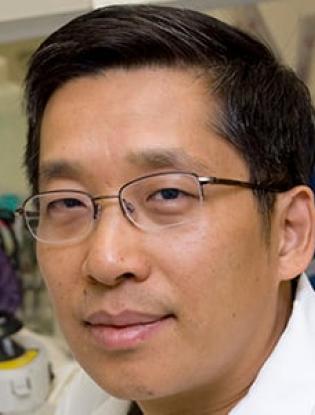Qiang Lu, Ph.D.

Duarte Cancer Center
Duarte, CA 91010
1996 - University of California San Diego, Ph.D., Biochemistry
1986 - University of Science and Technology of China (USTC), B.S., Biology
2014-Present - Professor, Department of Stem Cell Biology and Regenerative Medicine, Beckman Research Institute of City of Hope, Duarte, CA
2009-2014 - Associate Professor, Department of Developmental & Stem Cell Biology, Beckman Research Institute of City of Hope, Duarte, CA
2002-2009 - Assistant Professor, Department of Developmental & Stem Cell Biology (Neurosciences), Beckman Research Institute of City of Hope, Duarte, CA
1996-2002 - Postdoctoral Fellow, Department of Cell Biology, Harvard Medical School, Boston, MA
1991 - 1996, Graduate student, Department of Chemistry and Biochemistry, University of California, San Diego, CA
Neural progenitor cells control proliferation vs. differentiation through symmetric vs. asymmetric cell divisions. Symmetric cell division expands the progenitor cell pool and asymmetric cell division generates mature neuronal and glial cells. During brain development, the balance between symmetric and asymmetric cell division is modulated by coordinated actions between growth stimulatory (e.g. growth factors, sonic hedgehog, wnt) and inhibitory (e.g. tumor suppressors) pathways. How these positive and negative signals exert their impact on the fate of daughter cells during the mitosis of a neural progenitor cell is what we are keen to study. We have identified a network of interacting proteins, including Ephrin-B, RGS3, KIF20A, SEPT7 and Galpha subunits, which appear to act during cytokinesis to impact the decision of daughter cells to either stay as a progenitor cell or become differentiated. Ongoing studies focus on understanding how these mitotic proteins may provide an integration point linking growth stimulatory and inhibitory signals to the final process of cell fate determination of daughter cells.
What are the epigenetic and transcriptional mechanisms that guide the developmental progression of cortical neurogenesis and gliogenesis?
The gene expression potential of a cell’s genomic DNA, in large part modulated through specific epigenetic modifications, determines its cellular state. We are interested to understand epigenetic mechanisms, including DNA methylations and histone modifications, which guide a neural progenitor cell to choose between a proliferative and a differentiative state. Our approach is to apply purified primary neural progenitor cells and their neuronal progeny to various genome-wide survey technology to identify epigenetic and transcriptional profiles that are specifically attributed to the in vivo state of the cell type. These data will then help us identify candidate genes or mechanisms for further functional characterizations and validations. We are currently conducting global analyses of histone modifications and single cell RNA-seq to identify factors important for guiding neuronal and glial differentiation during cortical development.
Can regulators of symmetric and asymmetric cell divisions be harnessed for developing brain cancer treatment?
Regulators of symmetric and asymmetric cell divisions that work during cytokinesis may lie downstream of many growth stimulatory (oncogenic) pathways and may thus serve as general therapeutic targets for developing anti-proliferation therapies for brain tumors. We are currently testing this idea by targeting the EphrinB-RGS3-KIF20A-SEPT7 axis proteins in medulloblastoma- and glioblastoma-initiating/stem cells. Our hope is to identify small molecule inhibitors that can disrupt the interactions amongst these proteins in brain tumor cells thereby stop tumor cell proliferation.